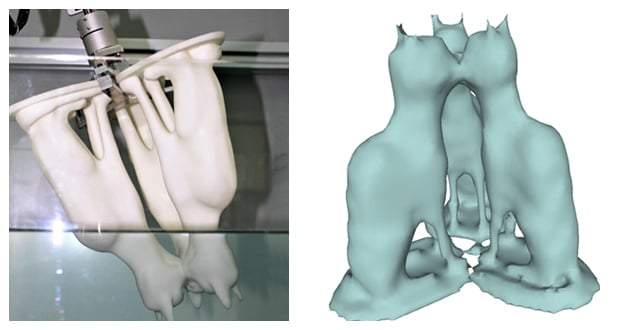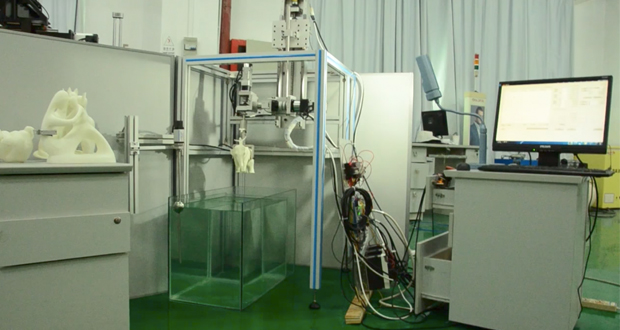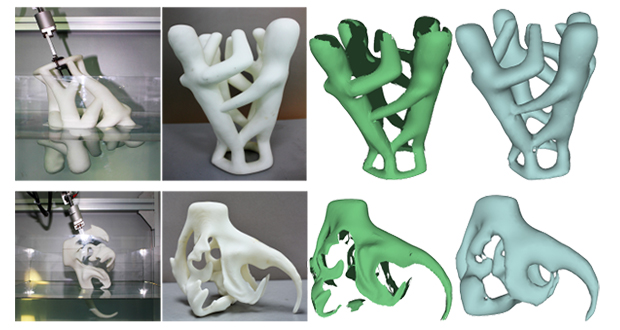A new 3D scanning process that takes 3D scanning underwater

3D scanners are a very useful tool when you want to create a new 3D model of an already existing physical object. 3D scanners that you can currently find on the market today are very efficient and accurate, but when dealing with parts that have a complex geometric shape or hidden pieces, even the best performing machines have their limits.
It is for this reason that a team of researchers from Tel-Aviv University, Shandong University, Ben-Gurion University and the University of British Columbia has come together to develop a new 3D acquisition approach based on Archimedes principle of fluid displacement. This new technique consists of submerging solid objects into the water, which enables the scanner to pick up on all the parts of the piece no matter how well hidden.
In order to scan the object, a mechanical arm plunges it several times into a tank of water. The repetition of this process and the use of sensors in the tank make it possible to measure the volume and the displacement of the water around the object. To obtain the 3D model, the arm changes the dive-axis and repeats the process over and over. By repeatedly plunging the arm into the water on a different axis, the 3D acquisition is more accurate and can pick up on geometries of the object that would have been hidden by a laser or other 3D scanners.
While this latest innovation in 3D scanning may seem like the perfect answer to previous scanning set backs, The process still has issues with air pockets that may be present in the objects. During the scanning process, water can stagnate in air pockets of the object, which causes the results to be invalid.
Regardless of this, researchers are working to overcome it by measuring the level of water while the object is being lifted vertically out, as well as while it is being dipped in. In addition, other tests have been carried out on different objects such as a man riding on an elephant, a model of a mother and child, and a DNA double helix structure, which have shown encouraging results and support the shared enthusiasm of the researchers who are working on a solution to improve the quality of the scanned models.
The project will be presented at SIGGRAPH 2017, a conference on innovation in 3D, which will be held in Los Angeles from July 30 to August 3. While waiting for the results of this conference, you can watch the video below to better understand the process:
https://youtu.be/yHvyPnkuAiw
What do you think of this new method of 3D scanning? Let us know in a comment below or on our Facebook and Twitter pages! Don’t forget to sign up for our free weekly Newsletter, with all the latest news in 3D printing delivered straight to your inbox!









